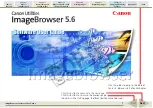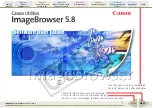
Installation considerations
11
Installation considerations
This section describes the following topics for installing or upgrading to ColdFusion MX 7:
•
Installation considerations for all platforms
•
Installation considerations for Windows
•
Installation considerations for UNIX
Note:
To use VisiBroker for CORBA connections in ColdFusion MX 7, see
“Enabling CORBA
support” on page 57
.
Installation considerations for all platforms
The following are installation considerations for all platforms:
•
Macromedia supports installing ColdFusion MX 7 side-by-side with ColdFusion MX 6.1 and
ColdFusion MX. Macromedia supports upgrading to ColdFusion MX 7 from ColdFusion 5
and ColdFusion 4.5. If you are upgrading, you must back up your existing ColdFusion
applications first.
•
If you have previously installed a Beta version of ColdFusion MX 7, you must uninstall it
before you install the release version.
•
Macromedia recommends using the built-in (internal port-based) web server for development,
but not in a production environment.
•
If you have ColdFusion 4.5 or 5 installed on your computer, ColdFusion MX 7 installs in
coexist mode automatically. You can migrate ColdFusion 4.5 or ColdFusion 5 resources (such
as data sources and Verity collections) to ColdFusion MX 7.
•
Previous versions of ColdFusion MX, including ColdFusion MX 6.1, can coexist with
ColdFusion MX 7; however, you cannot install ColdFusion MX 7 in the directory where
ColdFusion MX 6.1 resides.
You can switch to use a different web server for ColdFusion MX 7 after the installation, by
following the instructions for your platform and the web server in
“Configuring web servers”
on page 49
.
•
During installation of the server configuration, if you select the built-in web server, your web
root directory is C:/CFusionMX7/wwwroot by default. This web server runs on the 8500 port.
To display a page, append 8500 to the end of the host name or IP address; for example,
http://localhost:8500/MyApp.cfm. (If the page still does not appear, ensure that the document
is located in the ColdFusion MX 7 web root directory; for example, C:/CFusionMX7/
wwwroot\MyApp.cfm. For more information, see
“Using the built-in web server” on page 21
.
•
To interact with ColdFusion pages and components from a Macromedia Flash SWF file, use
the Flash Remoting service in ColdFusion MX 7. To develop applications that use Flash
Remoting, you must install the Flash Remoting components in the Flash MX authoring
environment. The Flash MX authoring environment or Macromedia Flex is required to build
applications that connect to and interact with the Flash Remoting service in
ColdFusion MX 7.
•
By default, Macromedia Flash Remoting cannot access web services through
ColdFusion MX 7.












































